Managing online marking for digital exams
Marking digital exams is an important stage in the exams process, often involving multiple markers and student submissions made at different times. This guide provides some planning suggestions and considerations to support the marking processes.
Using LMS Gradebook features, you can create a workflow for marking that suits your subject’s needs and the processes and protocols in your department or school. The following tips are general, and we encourage you to contact Learning Environments if you would like to speak to someone about the particulars of your marking scenarios.
- Only one marker should interact with an individual student’s submission in SpeedGrader or mark that submission through Gradebook at the same time.
- Some exam assignments use external tools such as Gradescope or Cadmus, marking will occur within these tools and be passed back to the LMS Gradebook on a specified date.
- Alternate Exam Arrangements (AEA) are applied for some students, so submission times may vary according to time extensions or different time windows for the exam.
- In some subjects, there are multiple versions of an exam assignment allocated to different students. Each assignment appears in a separate column in the gradebook.
Before marking
Before beginning marking, hide the marks from students to ensure that some students don't receive their marks before others, and that you are able to finalise and moderate marking as needed before they are released.
To ensure that your marking is hidden from students, check that the 'grade posting policy' is set to manual before you begin marking. You can do this globally for the whole Gradebook by clicking on the settings icon on the top right of the Gradebook.
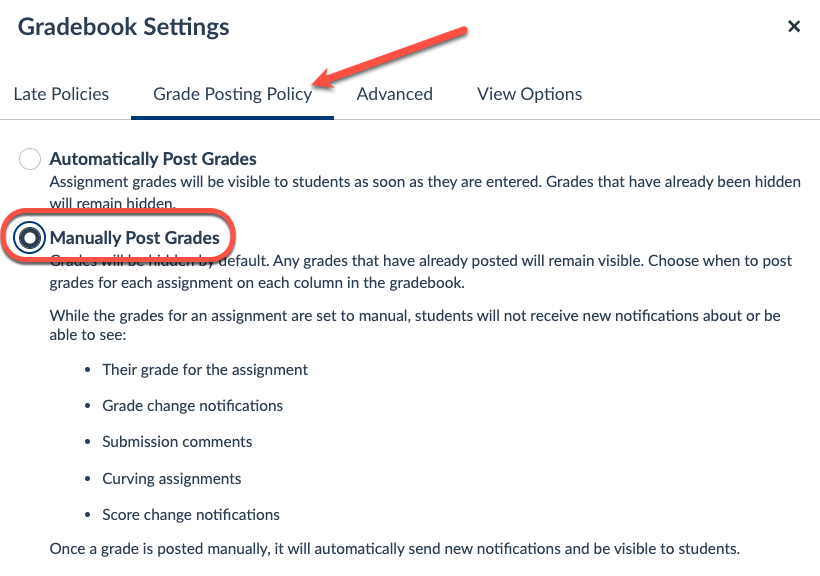
Alternately, you can set the grade posting policy for an individual assessment column by clicking on the 3 dots at the top of that column.
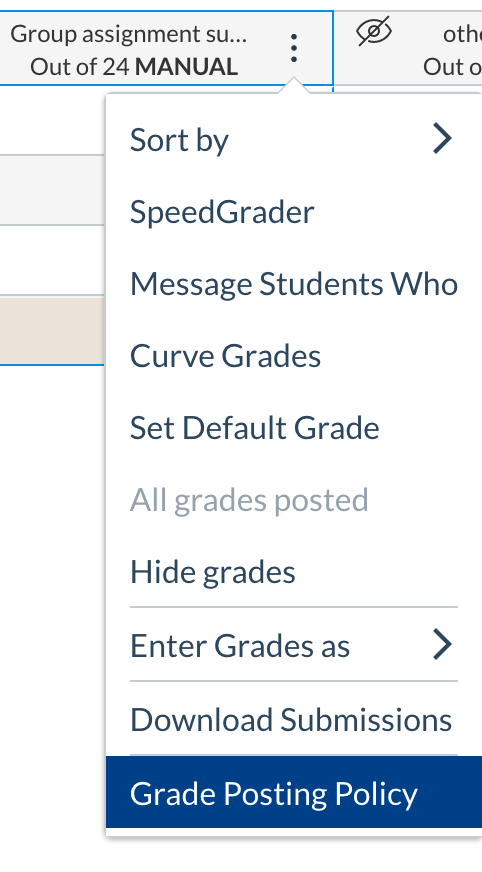
Setting the grade posting policy to manual ensures that grades are not automatically posted to students as you input them.
See the Grade Posting Policy guide for more information.
One marker per submission
When marking in teams, it is necessary to make sure that only one marker is accessing an individual student's submission at any time. If more than one marker is accessing one student's submission at the same time, your marks and annotations can be lost.
To mark in teams, first decide who will mark which students at any particular time. This could mean that one marker is allocated a particular tutorial group, or specific students within the cohort. Once each marker has been allocated their students, they can use the LMS Gradebook filter settings to view only the students they need to mark. In the case of a tutorial group, the marker can use the Filter option to select the particular tutorial.
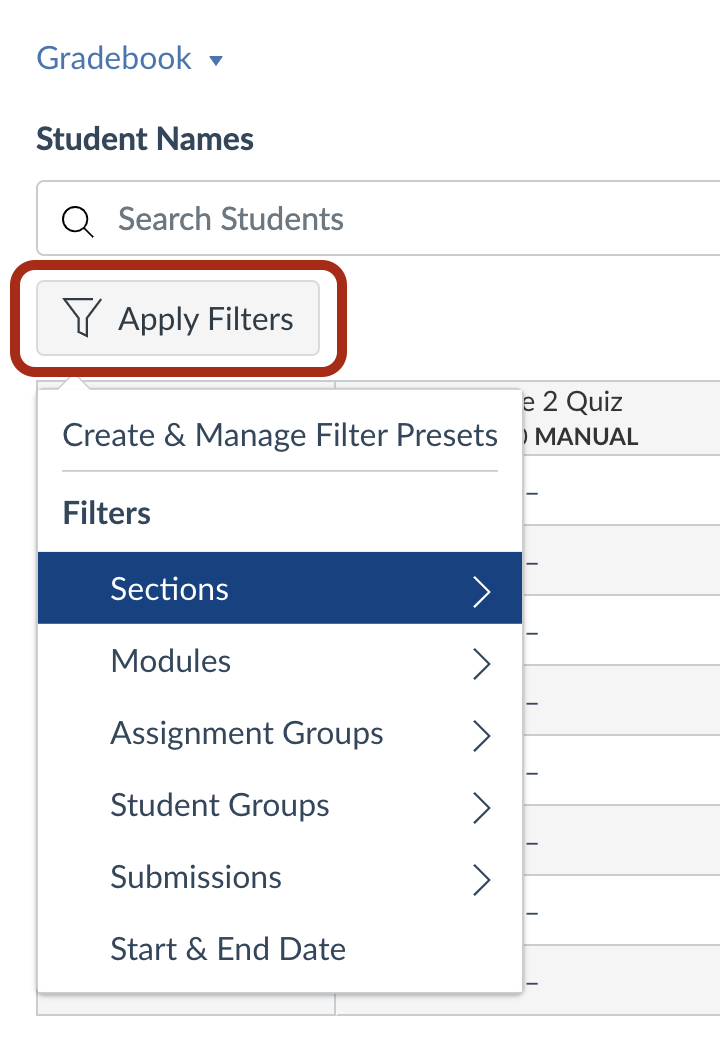
Marking by sections
You are able to filter the Gradebook based on Sections and allocate given markers to a Section to ensure only one person is viewing one student. Sections for tutorial groups etc are automatically created in your subject. More about creating sections of students that suit your marking needs.
Marking using the search box
In the case of marking particular students, markers can use the Search Students box in the Gradebook to search for the relevant student name.
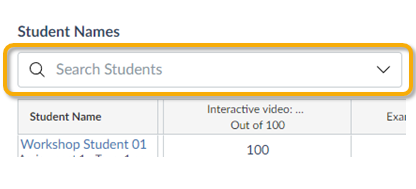
Marking by question
If you have a marking plan where multiple markers are each assigned specific questions within the same assessment to mark, the best way to manage this is to determine time periods that each marker will be accessing papers. This will avoid two or more markers accessing the same submission at the same time.
Sorting columns in Gradebook
During the marking process, it may be necessary to check the spread of grades, or which students have or have not submitted. To make this easier, you can use the 'sort' functionality on each column. You can sort the column so that it shows grades high to low and vice versa, or you can sort the column so that it shows students with no mark/submission.
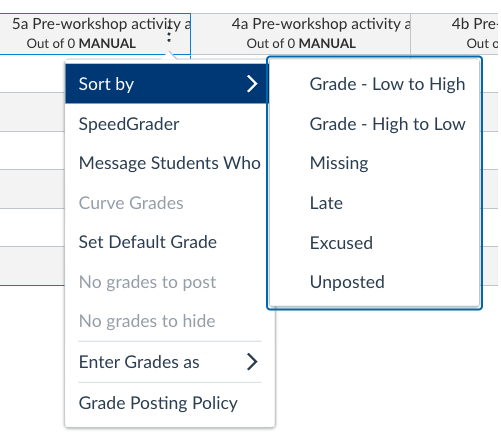
Alternative Exam Arrangements (AEA) and multiple exam assignments
It is important to be aware of any varied timings in the exam events when planning marking. Some students will have time extensions for an exam, or take the exam at a different time, so submissions may occur over an extended period. A broad summary of time variations is displayed with each assignment, and details can be reviewed by clicking Edit on the assignment.

In some subjects, there may be multiple exam assignments created and allocated to different students, within the main exam period or for special or supplementary exams. Each assignment will be a separate column in the gradebook. If multiple exam assignments have been created check that these marks are correctly included in final calculations.
Preparing final marks
Remember that not all marks that you see in Gradebook contribute to the final grade for a student. Go to the Assignments area of your LMS subject and check the Assignment groups to review which assessments contribute what percentage to students' final mark.
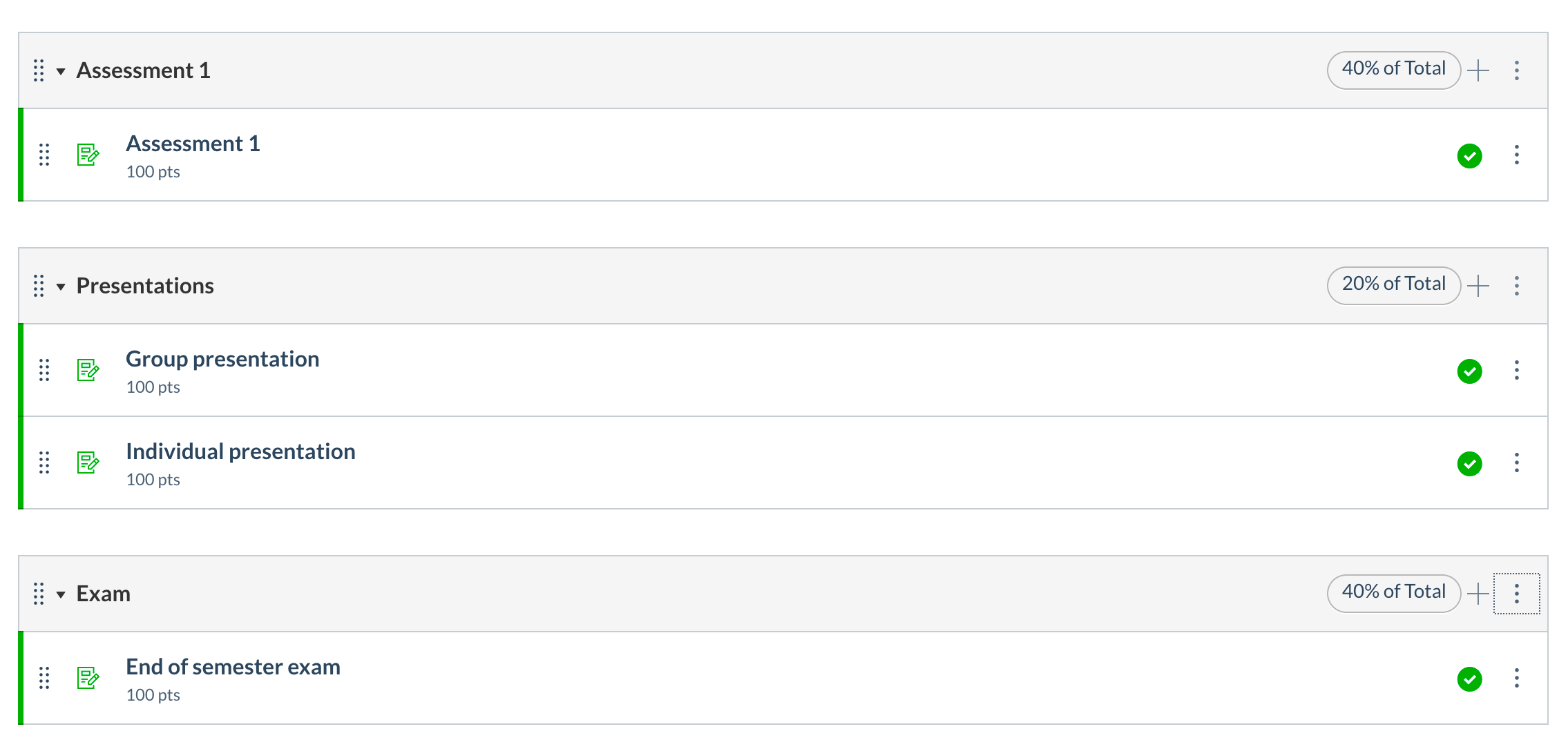
Working offline
The LMS Gradebook can be downloaded and opened in to Excel, allowing you to review or work with your grades offline. Simply click the Actions menu and select Export.
You can also import marks to Gradebook for assessments that occurred offline and did not require a student submission.
There may already be an exam assignment shell for this purpose or create an assignment with the setting No Submission, so that a column is created in Gradebook. Publish the assignment, then export the Gradebook, enter the marks into the correct assignment column in the spreadsheet then import the marks into the Gradebook.
>To import, click the Import button at the top of the page. There is an interim checking step which shows intended changes before they are made.

Using Gradebook history overview
The Grade history overview in Gradebook can be useful if you ever need to see who has marked a particular student, or how marks have changed for a student over time. The Grade history overview shows all actions by all staff members in the Gradebook, allowing you to backtrack and revert to earlier grades if discrepancies arise.
To access the Gradebook history, click the Gradebook menu on the top left, then select Gradebook History.
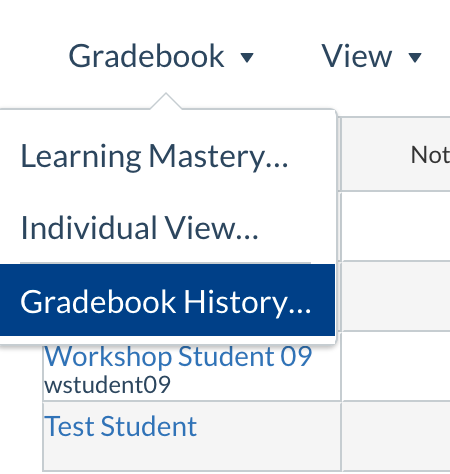
Using the notes column
The notes column in Gradebook allows you to add free form text against each student. This may be useful if you need to flag students with special circumstances for their assessments, such as a student who is exempt from a particular assessment or has an extension. To use the notes field, click View on the top left of the Gradebook, then Notes.

For more detailed information on any of the concepts above, read the step-by-step guides LMS guides. If you would like to discuss assessment and marking with someone from our team, please contact Learning Environments.
This guide was last updated 13 Mar 2024.
Please report any errors or omissions in this guide by submitting an LMS support request.